Lions Mane
£21.00
The Lion’s Mane Mushroom, also known by its Latin name Hericium erinaceus, is rapidly becoming one of the most sought-after mushrooms in the world. Famed for their medicinal qualities, especially in benefiting cognitive function and brain health, these easy-to-grow gourmet mushrooms make a tasty addition to most meals. They are easily identifiable by their distinctive appearance, resembling cascading white icicles or a lion’s mane, hence their name.
- Satisfaction Guaranteed
- No Hassle Refunds
- Secure Payments
Summary
The Lion’s Mane Mushroom, also known by its Latin name Hericium erinaceus, is rapidly becoming one of the most sought-after mushrooms in the world. Famed for their medicinal qualities, especially in benefiting cognitive function and brain health, these easy-to-grow gourmet mushrooms make a tasty addition to most meals and are easily identifiable by their distinctive appearance, resembling cascading white icicles or a lion’s mane, hence their name.
Lion’s MANE Description and Taste
What are the Uses of Lion’s Mane mushrooms?
Lion’s Mane has a rich history of traditional use, particularly in Asian cultures like China, Japan, and Korea. It is considered one of the most versatile gourmet and medicinal mushrooms you can find. As well as being a tasty ingredient beloved by vegetarians and vegans, the Lion’s Mane mushroom comes into its own when it comes to health benefits.
Lion’s Mane mushroom has been used for centuries in Traditional Chinese Medicine (TCM) for its various health benefits. Meanwhile, in Korea, it has traditionally been used to support patients undergoing cancer treatment.
Culinary Use: Lion’s Mane mushrooms are prized for their delicate, seafood-like flavor and unique texture. They can be cooked in various ways, including sautéing, grilling, roasting, or even eaten raw. Common culinary uses include using them as a meat substitute in vegetarian or vegan dishes, incorporating them into soups, stir-fries, pasta dishes, or serving them as a standalone dish.
Nutritional Supplement: Lion’s Mane mushrooms are available in supplement form, including capsules, powders, and extracts. These supplements are often taken for their potential health benefits, such as improving cognitive function, supporting nerve health, and boosting the immune system.
Brain Health and Cognitive Function: Some research suggests that Lion’s Mane mushrooms may have neuroprotective properties and could potentially support brain health. They are believed to stimulate the production of nerve growth factor (NGF), a protein that plays a crucial role in the growth, maintenance, and survival of nerve cells. As a result, Lion’s Mane mushrooms are sometimes used as a natural supplement to support memory, concentration, and overall cognitive function.
Digestive Health: Lion’s Mane mushrooms contain compounds that may have a positive impact on digestive health. They are believed to possess anti-inflammatory properties and may help promote the growth of beneficial gut bacteria, potentially supporting digestion and gastrointestinal health.
Immune Support: The bioactive compounds found in Lion’s Mane mushrooms, such as polysaccharides and beta-glucans, are thought to have immune-boosting properties. These compounds may help strengthen the immune system and support overall health and wellness.
Research and Development: Beyond traditional uses, Lion’s Mane mushrooms are also the subject of ongoing research due to their potential medicinal properties. Scientists are exploring their potential applications in treating various conditions, including neurodegenerative diseases, anxiety, depression, and more.
How to Use Lion’s Mane Mushrooms
As with the Bear’s Head Mushroom, the Lion’s Mane Mushroom must be used while it is young, white, and tender. Like all edible fungi, the Lion’s Mane mushrooms should be cooked before consumption. However, the Lion’s Mane can be consumed raw (it just tastes better cooked!.
They should also be used as soon as possible, as they tend to become more bitter the longer they are kept in the refridgerator.
Culinary Use:
- Cooking: Lion’s Mane mushrooms can be cooked in a variety of ways, including sautéing, grilling, roasting, or frying. They can be used as a meat substitute in vegetarian or vegan dishes or incorporated into soups, stir-fries, pasta dishes, and more.
- Raw: Lion’s Mane mushrooms can also be eaten raw. They have a mild, seafood-like flavor and a firm texture when raw, making them suitable for adding to salads or using as a garnish
Tea:
- Lion’s Mane mushroom tea can be made by steeping dried Lion’s Mane mushroom slices or powder in hot water. This can be a convenient way to consume Lion’s Mane mushroom for its potential health benefits, particularly for cognitive function and overall well-being.
Supplements:
- Lion’s Mane mushroom supplements are available in various forms, including capsules, powders, and liquid extracts. These supplements are often taken for their potential cognitive and immune-boosting benefits. They can be consumed orally with water or added to smoothies, juices, or other beverages.
Tinctures:
- Lion’s Mane mushroom tinctures are alcohol-based extracts of the mushroom. They are typically taken orally by placing drops under the tongue or mixing them with water or another beverage. Tinctures can provide a concentrated dose of Lion’s Mane mushroom compounds for potential health benefits.
Topical Use:
- Some people use Lion’s Mane mushroom extracts or creams topically for skin health or wound healing. These products are applied directly to the skin and may have anti-inflammatory or antimicrobial properties that could promote skin health and wound healing.
Nutritional Value
Lion’s Mane mushrooms are known to offer a wide range of potential health benefits and contain several essential nutrients and bioactive compounds. Whilst precise nutritional data may vary slightly depending on factors like growing conditions and maturity, here’s a general overview of the nutritional value of Lion’s Mane mushrooms per 100 grams of raw mushroom:
Calories: Approximately 20-30 calories per 100 grams, making them a low-calorie food option.
Protein: Lion’s Mane mushrooms contain a moderate amount of protein, typically ranging from 3 to 5 grams per 100 grams. While not as high as animal-based protein sources, they can still contribute to overall protein intake.
Carbohydrates: Lion’s Mane mushrooms are low in carbohydrates, with roughly 2-5 grams per 100 grams, making them suitable for low-carb diets.
Dietary Fiber: They provide a good amount of dietary fiber, usually ranging from 2 to 3 grams per 100 grams. Fiber is important for digestive health and may help promote feelings of fullness.
Vitamins and Minerals: Lion’s Mane mushrooms contain various vitamins and minerals, including:
- B vitamins: such as riboflavin (vitamin B2), niacin (vitamin B3), pantothenic acid (vitamin B5), and folate (vitamin B9). These vitamins play essential roles in energy metabolism and overall health.
- Minerals: including potassium, zinc, copper, and phosphorus. Potassium is crucial for heart health and muscle function, while zinc and copper are important for immune function and overall well-being.
- Bioactive Compounds: Lion’s Mane mushrooms are rich in bioactive compounds, such as:
- Polysaccharides and beta-glucans: These compounds are believed to have immune-modulating effects and may help support immune function.
- Hericenones and erinacines: These compounds are unique to Lion’s Mane mushrooms and are thought to have neuroprotective properties. They may support cognitive function and brain health.
It’s important to note that how a Lion’s Mane mushroom is prepared impacts its nutritional value, with some nutrients that may be more bioavailable when cooked.
How to Store Lion’s Mane Mushroom?
Storing Lion’s Mane mushrooms properly is essential to maintain their freshness and quality. Here are some steps to store Lion’s Mane mushrooms:
Refrigeration: Fresh Lion’s Mane mushrooms should be stored in the refrigerator to prolong their shelf life. Place them in a paper bag or a loosely closed container to allow for airflow.
Moisture Control: Lion’s Mane mushrooms are sensitive to moisture, so it’s important to keep them dry. Avoid washing them until you’re ready to use them, as excess moisture can cause them to deteriorate more quickly. If there is any condensation in the packaging, gently pat the mushrooms dry with a paper towel before storing them.
Proper Temperature: Store Lion’s Mane mushrooms in the refrigerator at temperatures between 32°F and 38°F (0°C to 3°C). Avoid storing them in the coldest part of the fridge, such as the back, as this can cause them to freeze and become damaged.
Ventilation: Ensure that there is some ventilation in the storage container or bag to prevent the mushrooms from becoming too damp. However, do not store them in a completely open container, as they may lose moisture too quickly and become dry.
Use as Soon as Possible: While Lion’s Mane mushrooms can be stored in the refrigerator for several days, they are best when used as soon as possible after purchase. The longer they are stored, the more their quality may deteriorate.
Freezing (optional): If you want to store Lion’s Mane mushrooms for an extended period, you can freeze them. However, freezing can change the texture of the mushrooms, so they are best used in cooked dishes rather than raw. To freeze, slice the mushrooms and spread them out on a baking sheet in a single layer. Once frozen, transfer them to a freezer bag or airtight container and store them in the freezer for up to several months.
Out in the Wild
Finding wild Lion’s Mane mushrooms is not an easy task and requires knowledge of their habitat, proper identification skills, and caution.
It is widely distributed across different continents and is indigenous to various regions around the world. It is commonly found in temperate forests with hardwood trees. Here are some regions where Lion’s Mane mushroom is known to be indigenous:
North America: Lion’s Mane mushroom is native to North America and can be found throughout the continent, particularly in the eastern and central regions of the United States and Canada. It is commonly found in hardwood forests, including oak, maple, beech, and birch forests.
Europe: The Lion’s Mane mushroom is also native to Europe and can be found in countries such as the United Kingdom, France, Germany, and Russia. It is typically found in deciduous forests, particularly in temperate regions.
Asia: Lion’s Mane mushroom has a long history of use in traditional Asian medicine and is indigenous to countries such as China, Japan, Korea, and India. It is commonly found in temperate forests with hardwood trees, where it grows on dead or decaying wood.
Oceania: While less common, Lion’s Mane mushroom can also be found in parts of Oceania, including Australia and New Zealand. It is typically found in temperate regions with suitable hardwood tree habitats.
Here are some general tips on where to find wild Lion’s Mane mushrooms:
Hardwood Forests: Lion’s Mane mushrooms typically grow on hardwood trees, especially oak, maple, beech, and birch. Look for them in mature hardwood forests or wooded areas with a mix of deciduous trees.
Dead or Dying Trees: Lion’s Mane mushrooms are saprophytic, meaning they feed on dead or decaying organic matter. Look for them on the trunks or branches of dead or dying hardwood trees, particularly those with starting to decay bark.
Fall and Early Winter: Lion’s Mane mushrooms are more commonly found in the fall and early winter months, typically from September to December in temperate regions. They prefer cooler temperatures and moist conditions.
Sheltered Areas: Check sheltered areas such as the undersides of fallen branches, near the base of trees, or in areas protected from direct sunlight and strong winds. Lion’s Mane mushrooms may be found at various heights on the tree, from ground level to several feet above the ground.
Observation and Patience: When foraging for wild mushrooms, it’s essential to be patient and observant. Take your time to carefully scan the forest floor and examine tree trunks and branches for any signs of Lion’s Mane mushrooms. Be cautious and thorough in your search, as they can sometimes blend into their surroundings.
Lion’s Mane Mushroom vs Bear’s Head Tooth
| Weight | 2Kg., 4.5Kg. |
|---|
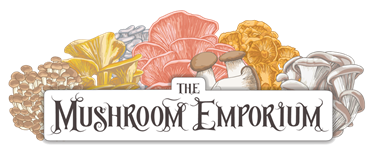
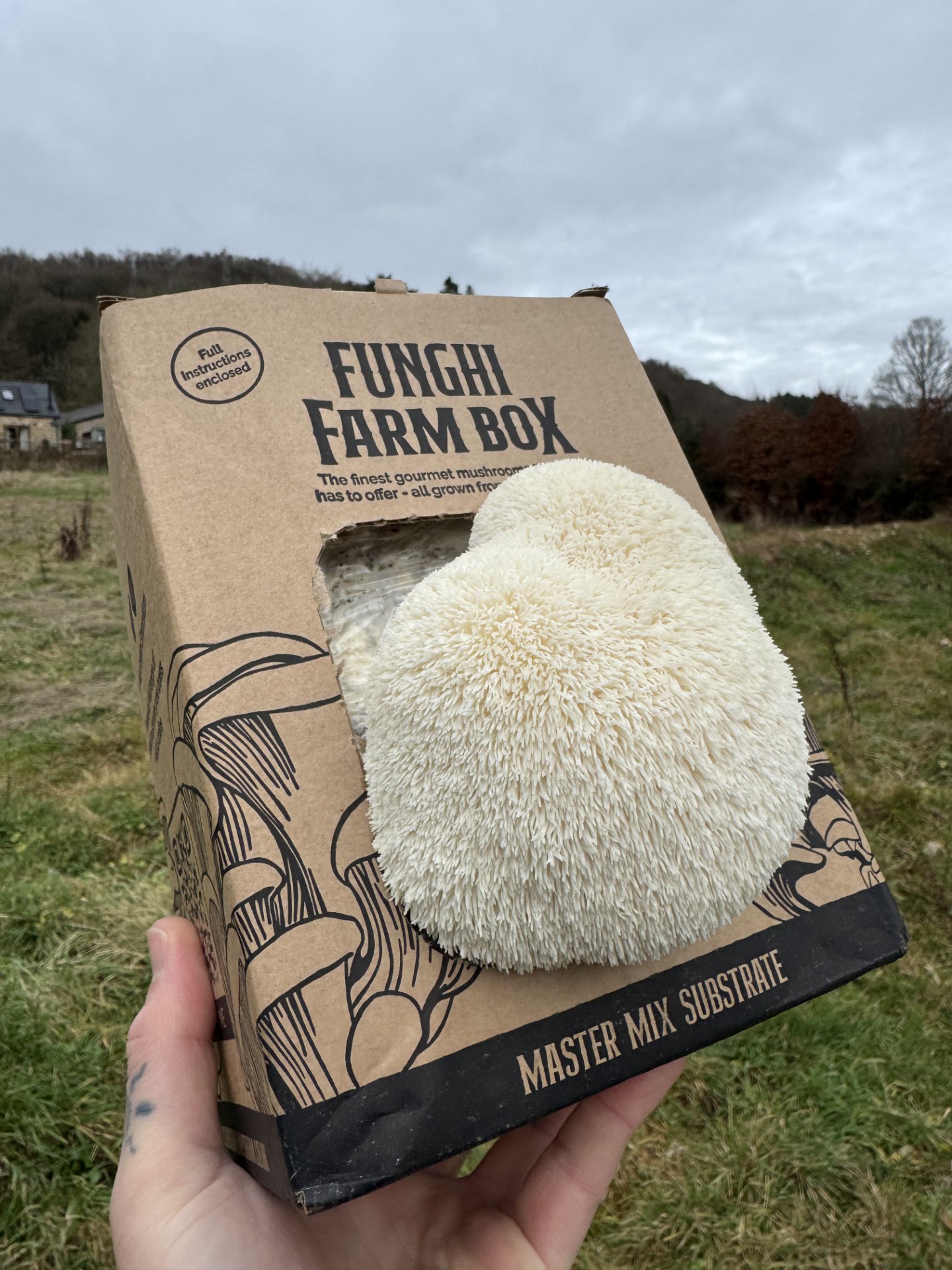
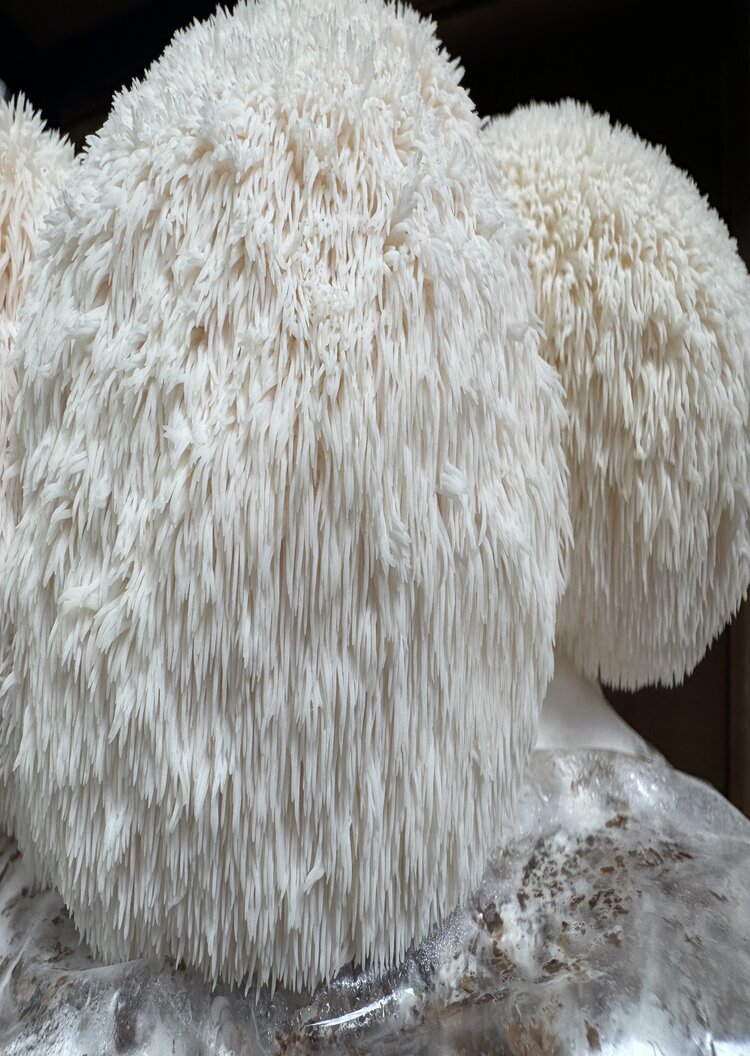
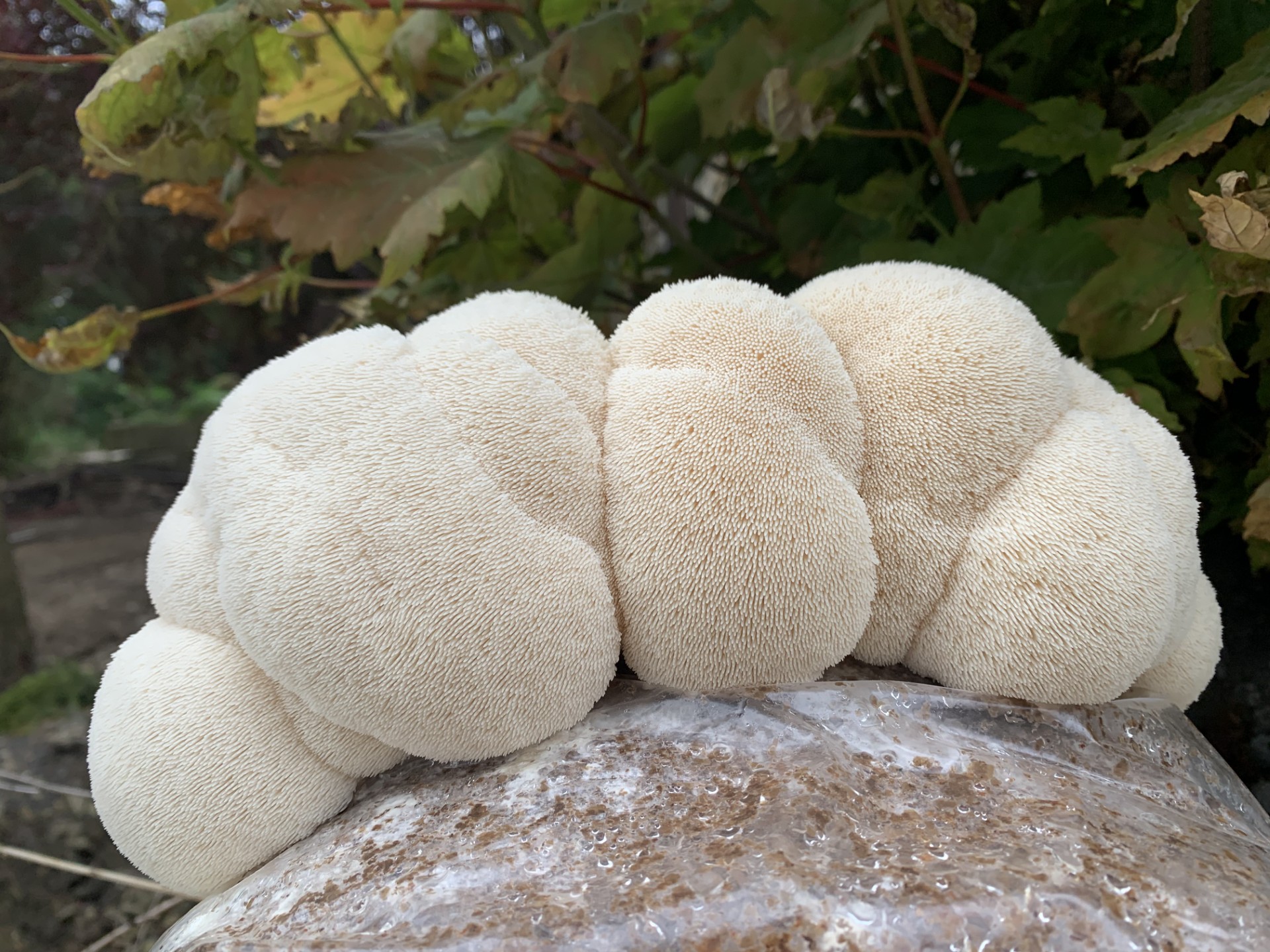
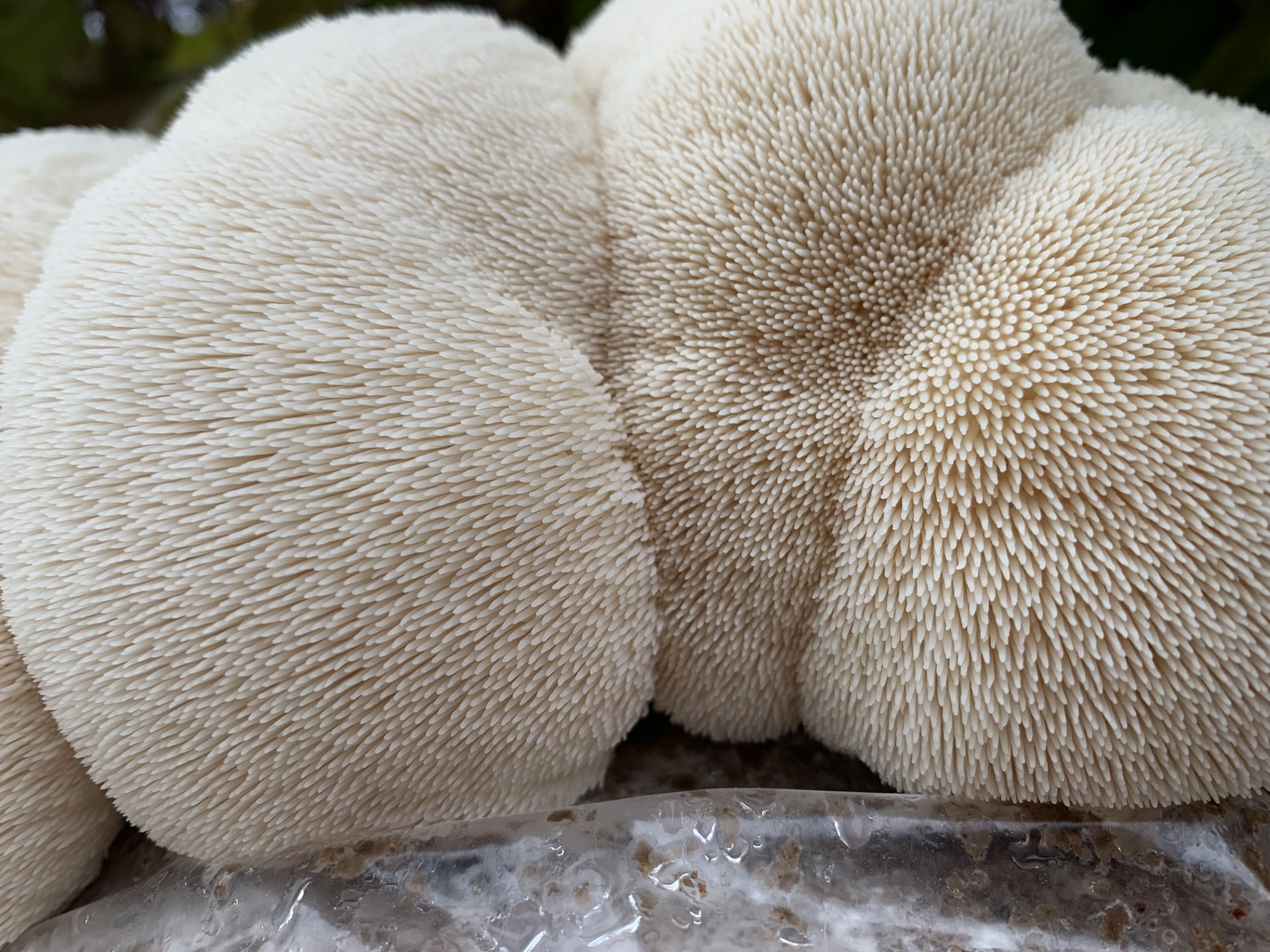

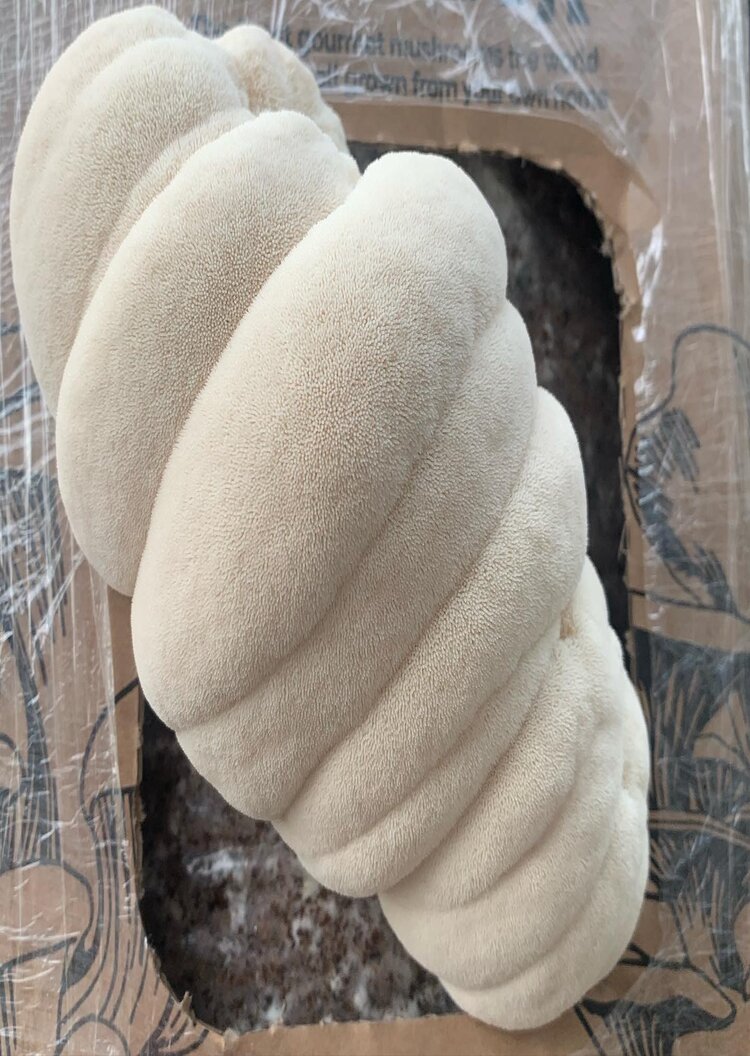

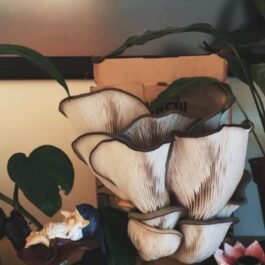
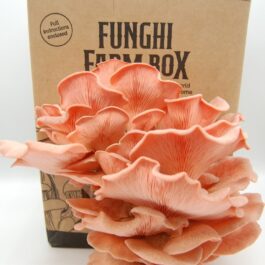
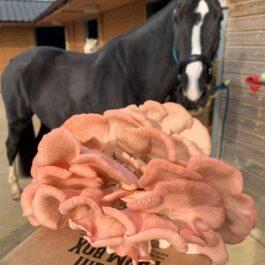
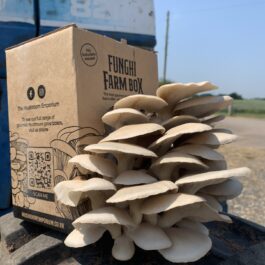


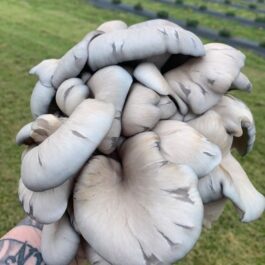
Reviews
There are no reviews yet.